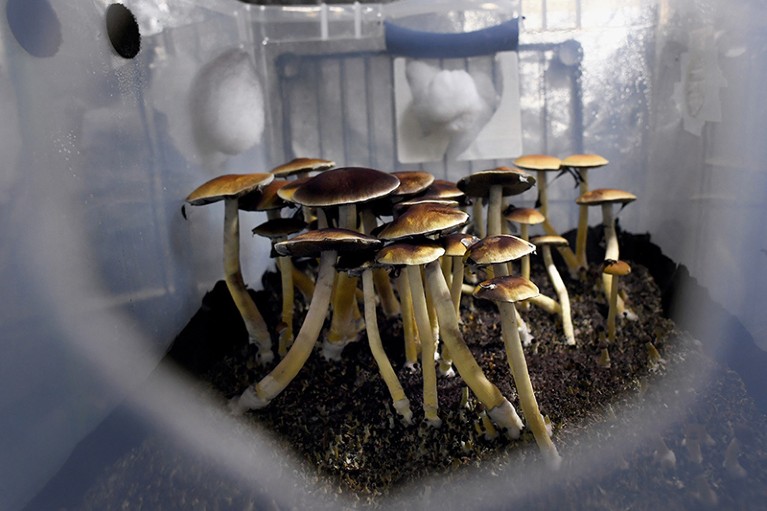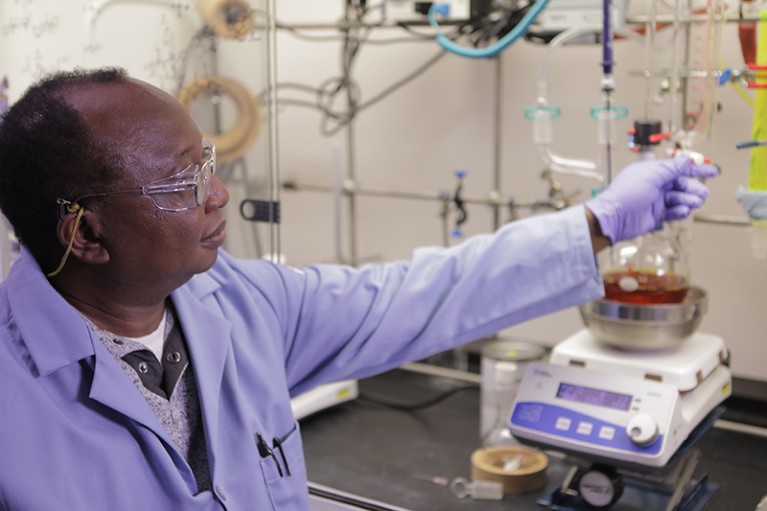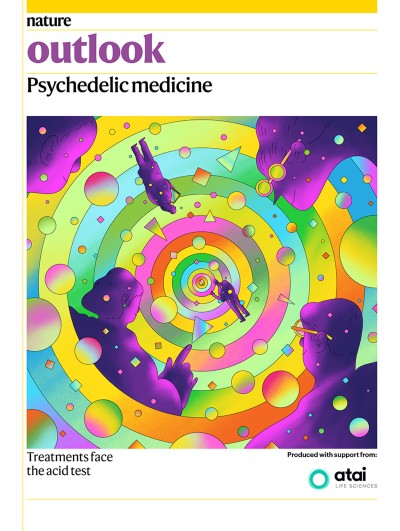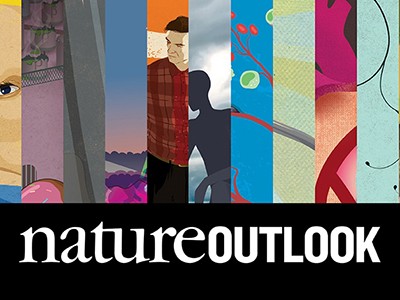[ad_1]

Magic mushrooms contain psilocybin, a psychedelic drug that shows potential as a treatment for depression.Credit: Joe Amon/Denver Post via Getty
In January 2023, Oregon is due to embark on a groundbreaking real-world experiment in psychedelic medicine. This follows a ballot measure in 2020, in which voters called on the state to begin creating the infrastructure needed to make the hallucinogenic drug psilocybin available as a treatment for mental-health disorders such as depression and anxiety. Canada made a similar move in January 2022, albeit with far more restrictions, allowing designated clinicians to prescribe psilocybin to people with debilitating mental illnesses, such as severe, treatment-resistant depression.
This drug, and the ‘magic mushrooms’ from which it is derived, remain illegal in both the United States and Canada, as they are in most countries. But psilocybin is experiencing a renaissance as a potential therapeutic. The most excitement surrounds the treatment of depression, with half-a-dozen clinical trials showing that a few doses of psilocybin can provide lasting remission for people who have otherwise struggled to obtain relief.
Part of Nature Outlook: Psychedelic medicine
“My initial response was amazement when I saw that a single treatment would produce this sort of long-term change in emotional state,” says Charles Raison, a psychiatrist at the University of Wisconsin–Madison who is currently overseeing a phase II clinical trial of psilocybin. He contrasts this with conventional antidepressants such as selective serotonin reuptake inhibitors (SSRIs), which require daily administration and trial-and-error matching of patient and drug — and where halting treatment too abruptly can lead to a brutal relapse. The US Food and Drug Administration has even granted psilocybin a ‘breakthrough therapy’ designation as a potential treatment for severe depression.
But even some advocates of psilocybin worry that the enthusiasm might be getting overheated, given that the studies so far have been limited in scope and challenged by issues such as achieving robust placebo control. Kimberley Golletz, a psychologist based in Corvallis, Oregon, who sits on the advisory board that is helping to determine how therapeutic psilocybin will be administered, is excited by the clinical data. “But I worry,” she says. “Will the results be as good in common practice?”
Mushrooming evidence
Robin Carhart-Harris became interested in the therapeutic potential of psilocybin following a series of experiments in 2012, in which his team at Imperial College London used functional magnetic resonance imaging to scan the brains of healthy volunteers who had taken the drug. “We were seeing changes in brain function that were suggestive of antidepressant action,” says Carhart-Harris, a psychopharmacologist now at the University of California, San Francisco. “And, less formally, people were reporting improvement in their well-being.”
To follow up on this work, Carhart-Harris and his colleagues in London set up one of the first contemporary clinical studies of psilocybin for depression. It was small — there were just 12 participants with treatment-resistant depression — and lacked a control arm owing to funding constraints. But the results were striking1. After two doses of psilocybin alongside psychiatric therapy, the participants all showed a strong reduction in depression symptoms. Five of them remained in remission for at least three months after the second dose.
Subsequent studies have provided stronger evidence, with more participants and a randomized controlled trial design (see ‘Psilocybin on trial’). In a study led by Alan Davis at Ohio State University in Columbus and Roland Griffiths at Johns Hopkins University in Baltimore, Maryland, people with depression who were treated with psilocybin saw their symptoms improve more than twofold over those in the control group2. And a phase II double-blind trial published by Carhart-Harris and colleagues showed that two doses of psilocybin benefited people with major depression about as much as a six-week course of the SSRI antidepressant escitalopram3. Remission rates were twice as high in the trial arm, and psilocybin had a marginally better safety profile.
The study led by Davis and Griffiths also tracked its 24 participants for up to 12 months after their final dose of psilocybin4. “We were kind of astonished to see that we still had half in remission up to a year later,” says Davis. And importantly, there were no drug-related serious adverse events reported during this interval.
Several larger studies are under way that could eventually pave the way to regulatory approval. In November 2021, London-based pharmaceutical company COMPASS Pathways released promising top-line data from a phase II study with 233 participants, and announced that a pivotal phase III trial is in the works. And a 100-person randomized controlled trial sponsored by the Usona Institute — a non-profit organization based in Madison, Wisconsin, where Raison is director of clinical and translational research — completed its initial data collection in late June.
Rewiring the circuitry
As clinical trials go ahead, researchers are also clarifying their understanding of what psilocybin is doing in the brain. When consumed, psilocybin is quickly metabolized into a compound called psilocin, which binds to and activates a subset of neuronal receptors belonging to the 5-HT family, most notably the 5-HT2A receptor. These receptors are normally activated by the neurotransmitter serotonin, which affects mood and emotional state, and its activity is the primary target of SSRIs.
Franz Vollenweider, a neuropsychopharmacologist at the University of Zurich in Switzerland, has conducted extensive research on psilocybin’s neurobiological and behavioural effects. “Depressed patients focus more on negative emotions and thoughts,” he says. “We showed that psilocybin really brings down acutely that negative emotional bias.” In particular, he highlights the drug’s parallel effects on cognitive processing in the cortex and emotional processing by the amygdala, a brain structure that mediates instinctive responses such as fear and aggression. In short, he says, psilocybin facilitates “cognitive control over emotions”.
Vollenweider and other researchers also highlight the drug’s impact on functional networks within the brain. One of these, known as the default mode network, is an interconnected set of nodes in the cerebral cortex that is involved with self-perception and self-awareness. People with depression might find be locked into a period of excessive self-consciousness, but brain imaging data suggest that psilocybin could break such vicious cycles by reducing connectivity in the default mode network.
A 2021 study showed how psilocybin could facilitate the remodelling of neuronal circuits5. Neuroscientist Alex Kwan and colleagues at Yale University in New Haven, Connecticut, used a specially designed microscope to image the brains of live mice after psilocybin treatment. After a single dose, the researchers saw in the cerebral cortex a strong and persistent increase in the density and size of dendritic spines — the neuronal projections that establish synapses with other neurons. “When we go back a month after that single dose, we can still see that elevation in the number of neuronal connections,” says Kwan. This effect could explain how psilocybin treats depression, he says, because the cortical tissue of patients with depression and other neuropsychiatric disorders is characterized by a lower density of synaptic connections in key regions of the cerebral cortex.
Room for interpretation
The clinical data provide only a limited sense of how effective psilocybin might be as a generalizable therapy for depression. One drawback is that the studies published so far have involved just a few-dozen participants receiving the drug. “People with depression are very different from each other, and having 20 people under this umbrella diagnosis that show some progress says very little,” says Eiko Fried, a psychologist at Leiden University in the Netherlands who has expressed concerns about the quality of a number of clinical psychedelic studies.
The larger trials from Usona and COMPASS could provide a clearer sense of benefit. One of the main constraints is funding, which remains severely limited for research into psychedelics. Raison says that Usona had a waiting list of roughly 15,000 volunteers for a study that could accommodate only 100 participants.

A scientist at the Usona Institute makes an adjustment to the equipment.Credit: Usona
Placebo control and study blinding are also pernicious issues when studying a drug whose vivid cognitive effects are so well known. Fried points out that some studies can produce artificially positive results if volunteers know they are in the control arm: “Not because the treatment works better than placebo, but because the control arm works worse than placebo,” says Fried. Similar issues have plagued SSRI clinical trials in the past. “Almost everyone who got an SSRI knew it,” says Raison.
Researchers have tried to deal with the confounding effects of participants’ expectations of the drug in several ways, none of them perfect. The study led by Davis and Griffiths used a design in which both arms of the trial received the drug, but on a staggered schedule2, enabling the delayed-treatment arm to serve as a control for the early-treatment arm. COMPASS, meanwhile, is giving control subjects ultralow doses of psilocybin that are incapable of producing any meaningful psychedelic effect.
Psilocybin trials are also complicated by the fact that the treatment must be closely coupled with psychiatric care from specially trained medical professionals. This is typically a multi-visit process that entails preparing participants for treatment, facilitating the psilocybin trip itself, and then overseeing an integration process after the treatment. Davis describes this last step as an important opportunity for creating a lasting effect. The participant revisits their psychedelic experience with the clinician, discussing matters such as “how they’re going to move forward to capitalize on that therapeutic encounter”.
But there is no standardized training protocol for psilocybin facilitators, and differences in how this component is carried out can itself shape the study outcome. “The experience is very sensitive to the context in which it occurs,” says Carhart-Harris.
Coming to the clinic
These knowledge gaps could become more problematic as psilocybin enters real-world practice. Long-term efficacy against depression is an open question, because no trial has yet shown benefits lasting beyond a year. And Raison is concerned about how to anticipate and shield patients from the mood crash that takes place when the effects of psilocybin recede. “How often are these things going to have to be re-dosed?” he asks. “Are they going to become chronic treatments, and what’s the implication of that?”
The durability of treatment could also be challenged by commercial pressure to reduce the psychiatric component of psilocybin therapy, so that the drug can be given to as many people as possible. Golletz believes that the current requirements for therapeutic facilitators in Oregon, which include 160 hours of training but no formal clinical expertise, might prove inadequate in some cases. “That level of training may not be sufficient to treat a client, for example, who’s had treatment-resistant depression for 20 years and has found no relief,” she says.
More from Nature Outlooks
Scaling up the number of people treated could also lead to safety problems. Psilocybin has generally exhibited an excellent safety profile, but the large COMPASS trial saw more severe treatment-associated adverse events than the other trials, including suicidal behaviour in three people who received the highest dose — although it should be noted that all such cases arose at least one month after treatment.
Participants in trials are screened for potential risk factors, so the results will be more unpredictable in unfiltered groups of psychiatric patients. “As this gets to a larger population, we’re going to see some serious adverse events coming up,” says Davis.
Nevertheless, the clinic doors are opening. Carhart-Harris hopes the expanding use of psilocybin in Oregon and Canada will provide invaluable information that the clinical research community lacks the resources to obtain. “It’s a great opportunity to assess things like risk prediction of response,” he says. “Can we predict the worst cases so that we can mitigate them?”
Davis is more equivocal. “I’m optimistic that these treatments are the future,” he says. But he also worries about the consequences of bringing them to patients through the ballot box, as happened in Oregon, rather than through formal clinical approval. “I think we’re doing a potential disservice to the research.”
[ad_2]
Source link



